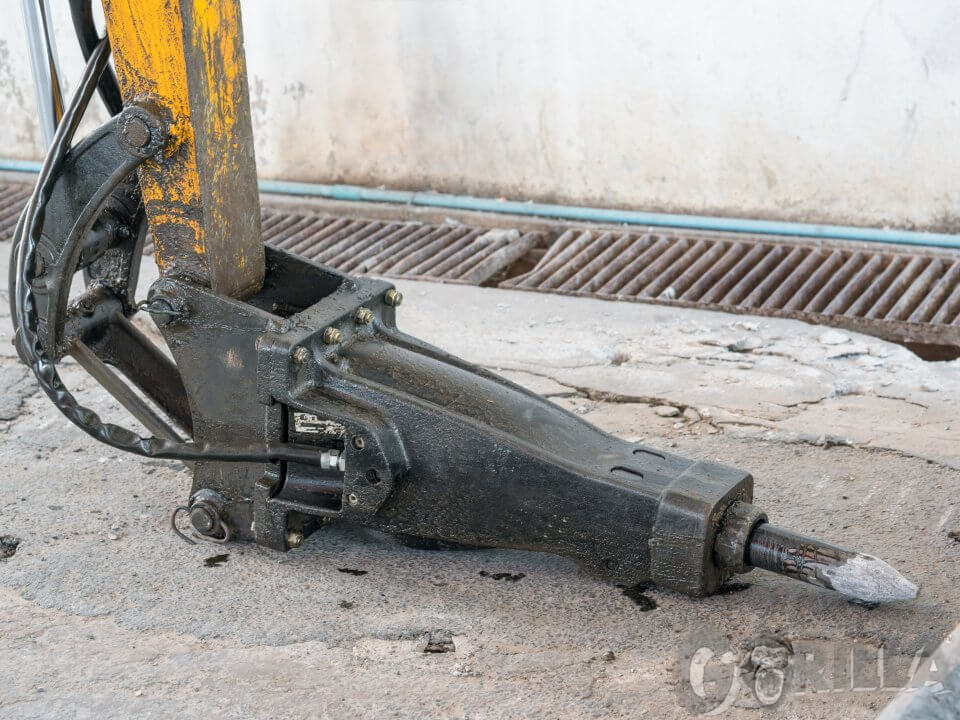Hydraulic Hammers & Breakers Take The First Steps Toward Harvesting Demolition Debris
April 23, 2005Ingersoll-Rand Acquires United States Distribution Rights For Tramac Branded Hydraulic Breakers
April 23, 2018Rock Products ,
March 1st, 1998 by Bob Drake
Using a hydraulic hammer instead of explosives to free rock from the quarry face occasionally has been reported in some European operations but is virtually unheard of in North America. However, as hammers and carriers increase in size and durability, sound attenuation is improved, and residential and business developments encroach upon urban quarries, there may be a few applications where hammers work .
According to Krupp Bautechnik, a German manufacturer of hammers, field results reveal five advantages to using a hammer for primary breaking.
1. Selective extraction Quarrying methods using explosives typically mix together varying mineral grades within a deposit. This can reduce quality or make the stone unsuitable for some applications. Hydraulic hammers allow selective quarrying of individual rock layers, possibly providing higher-priced products.
2. Higher quality standards Blasting can cause microcracks in quarried rock, Krupp said, which may decrease rock quality and selling price. Blasting also produces a certain volume of unsaleable fines. By reducing fines, the saleable production volume in the required grain sizes can be increased as much as 5%, according to the company.
3. Continuous production Before blasting, the danger zone near the quarry face must be cleared of people and machinery, often interrupting production. Primary and secondary breaking using hydraulic hammers allows continuous production and decreases movement of mobile crushers and conveyor systems. Processing and conveying equipment can consistently remain close to the working face.
4. Fewer, smaller crushers Hammer operators can determine the fragmentation of the rock before initial crushing. This can eliminate the need for a large primary crusher, Krupp said. Material can be fed directly to downstream crushers, saving on investment and maintenance costs.
5. Environmental aspects Quarries facing severe restrictions on noise and vibration from blasting may find hydraulic hammers an effective alternative. New sound-attenuated (“silenced”) hammers can operate at noise levels as low as 85 dBa at a distance of 10 meters Krupp said. Another environmental advantage of hydraulic hammers is the resulting lower bench heights, which can reduce reclamation costs.
But is it cost effective? Although using a hydraulic hammer for primary breaking intuitively seems like a slow, costly proposition, under some conditions it may be worth consideration. If you are facing fierce public opposition to blasting, and rock- formation characteristics-such as bedding, compressive strength and fractures-are amenable to breaking with a hammer, it may be an attractive alternative to a prolonged public battle or to shut down of the operation.
Nevertheless, potential production rates, hammer and carrier capital and operating costs, and operator costs are limiting factors that could make the cost-per-ton too high in most North American quarries.
Facing underutilization of a new drilling rig at its Cooma Road Quarry in New South Wales, Australia, CSR established a system of internal contracting to spread the costs-and savings-among six quarries in the region. According to Tamrock News, CSR was able to dispose of the six old air track drills used at the quarries and replace them with one piece of equipment and one operator.
Cooma Road Quarry charges the other five operations $140 (Australian) per hour, including relocation, drill steel and bits, operating and maintenance costs and depreciation. That is about 71% of the price charged by local drilling contractors. CSR expects to decrease the hourly rate as efficiency increases. The rig averages 29 drilled meters per hour. Drill rig utilization is about 97%.


